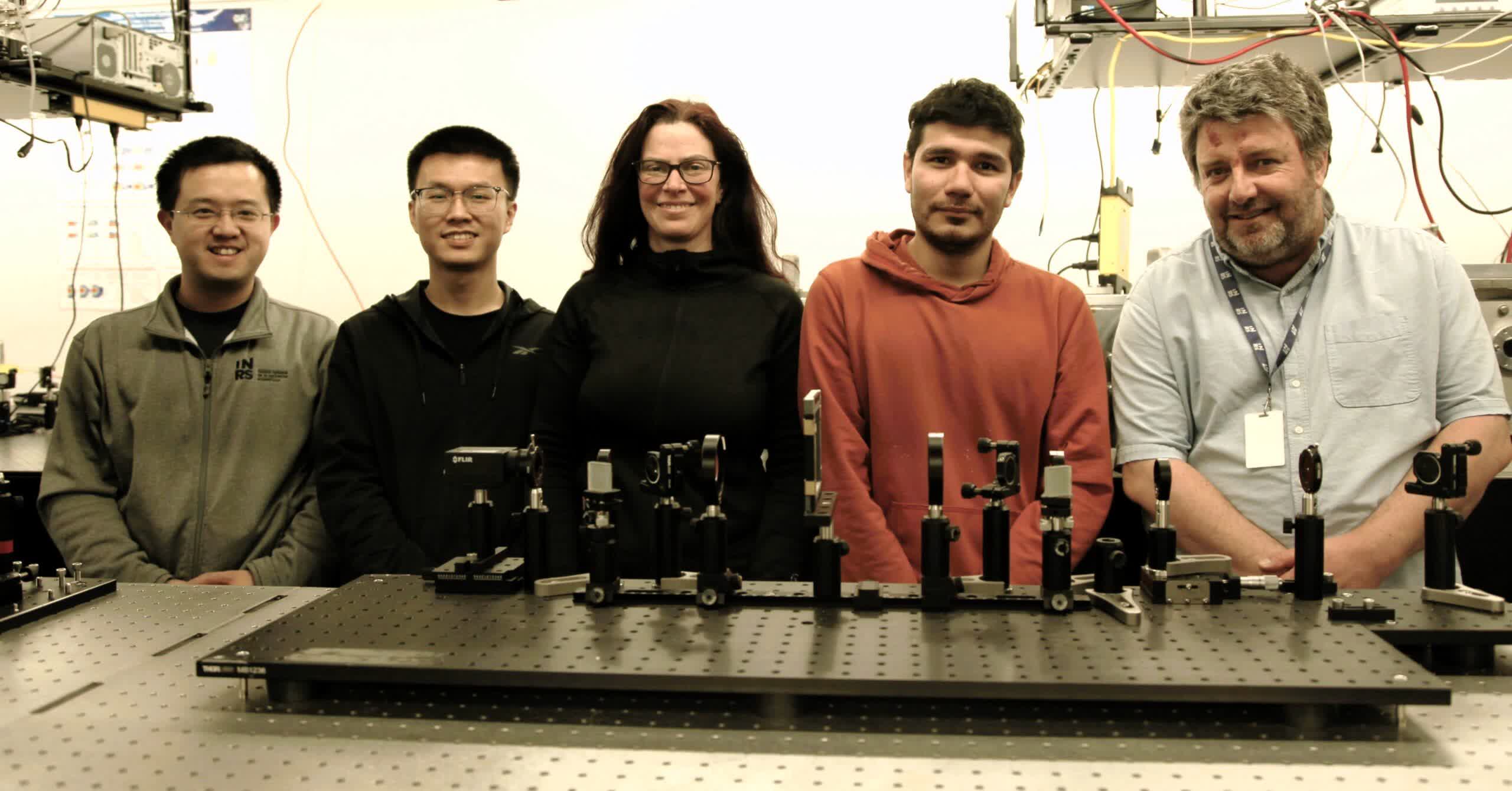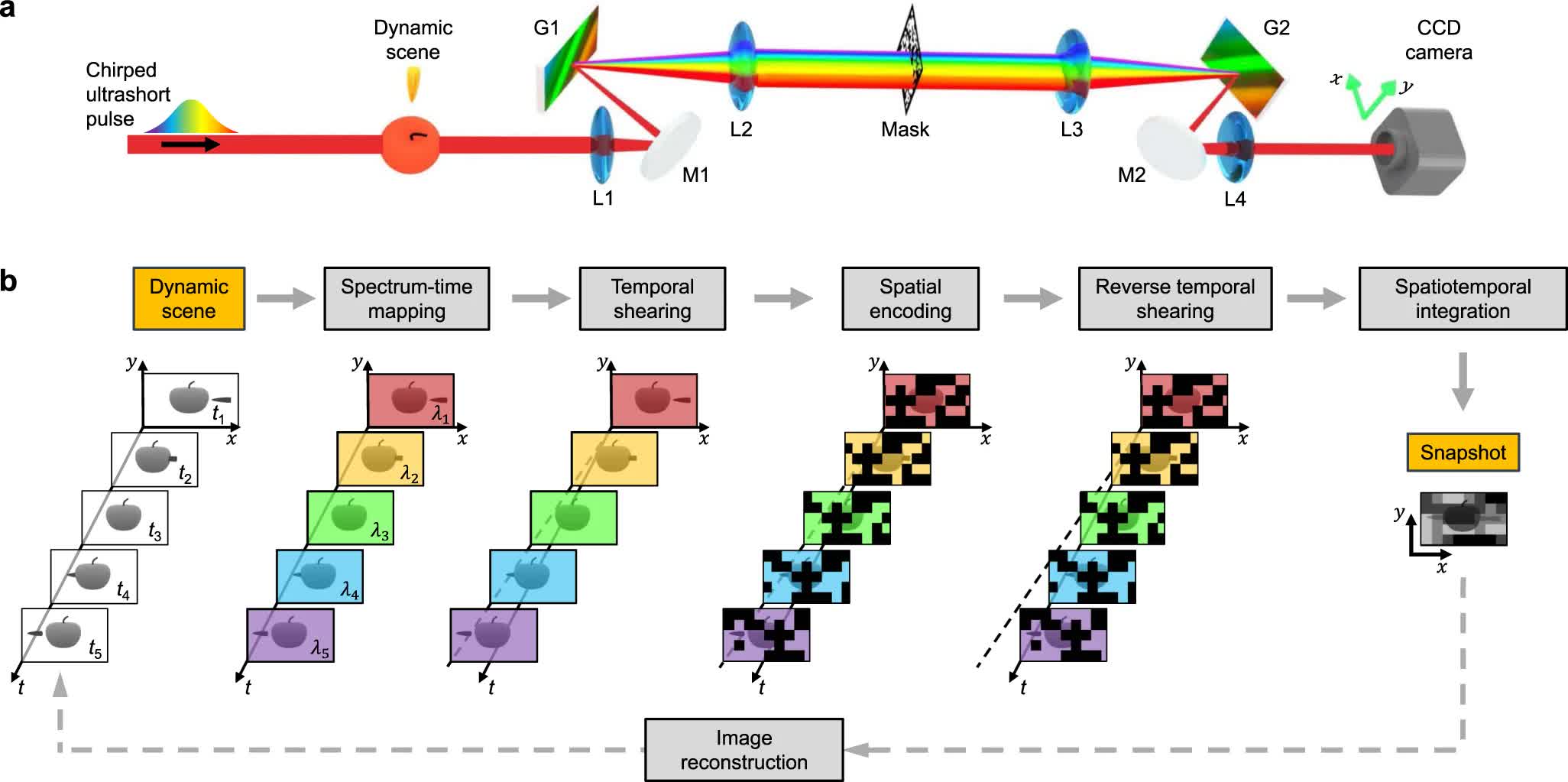In a nutshell: Researchers at the National Institute of Scientific Research (INRS) in Quebec have developed an ultrafast camera capable of providing full-sequence encoding rates of up to 156.3 THz to individual pixels, which works out to 156.2 trillion frames per second. Dubbed SCARF, which is short for swept-coded aperture real-time femtophotography, the cutting-edge imaging device is fast enough to capture phenomena like transient absorption in a semiconductor and ultrafast demagnetization of a metal alloy in a single shot.

For comparison, some flagship smartphones can record video at up to 960 frames per second. The Slow Mo Guys on YouTube have shot high-speed footage at up to 800,000 frames per second.
INRS believes the new imaging hardware will help expand knowledge boundaries across a range of fields including biology, chemistry, materials science, physics, and engineering. It will be especially useful when observing non-repeatable or hard-to-reproduce phenomena like shock wave mechanics in living cells, the researchers said.
Professor Jinyang Liang is a pioneer in the ultrafast imaging space. In 2018, he developed the T-CUP (trillion-frame-per-second compressed ultrafast photography). Based on passive femtosecond imagining, that system was capable of capturing 10 trillion frames per second.
Up to that point, fast camera systems mostly captured frames sequentially, one by one, then stitched them together to create the scene.
SCARF (swept-coded aperture real-time femtophotography)
T-CUP was groundbreaking, but not without shortcomings. Miguel Marquez, a member of Jinyang's team, said systems based on compressed ultrafast photography have to contend with degraded data quality. What's more, they also have to trade the sequence depth of the field of view. "These limitations are attributable to the operating principle, which requires simultaneously shearing the scene and the coded aperture," Marquez noted.
As INRS highlights, SCARF overcomes these challenges thanks to its imaging modality, which enables "fast sweeping of a static coded aperture while not shearing the ultrafast phenomenon."
a. System schematic. CCD Charge-coupled device, G1 – G2 Grating, L1 – L4 Lens, M1 – M2 Mirror.
b Operation of SCARF with illustrative data. An animated illustration is also provided in Supplementary Movie 1.
Source: Nature
Incredibly enough, the team said the camera was constructed using off-the-shelf and passive optical components, and is not all that expensive to build. As such, two companies – Few-Cycle and Axis Photonique – are already working with the researchers to bring the camera to market.
The team's research has been published in the journal Nature under the headline, "Swept coded aperture real-time femtophotography."
https://www.techspot.com/news/102414-world-fastest-camera-can-capture-1563-trillion-frames.html

